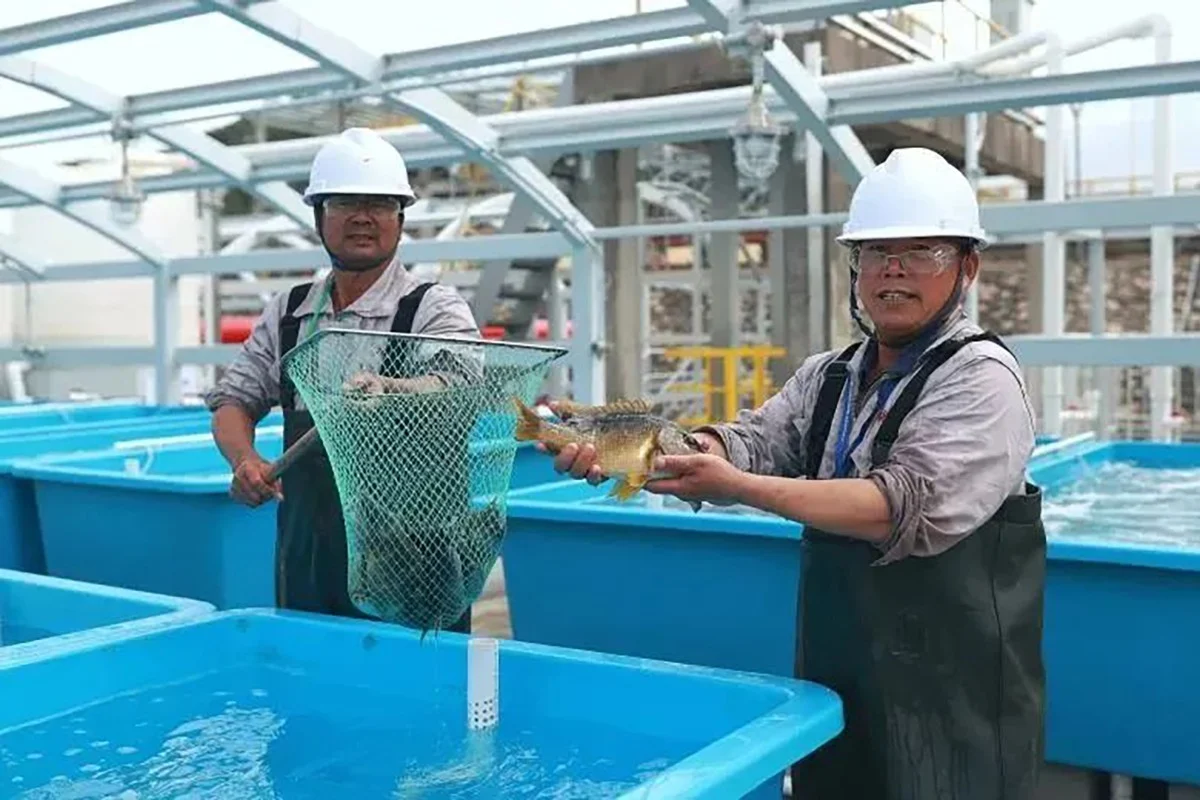Economy and business
China is using LNG regasification for breeding lobsters

Can liquefied natural gas help fisheries? An experimental project in China has successfully cultivated high-value marine species, such as grouper, lobster, and abalone, using the cold energy of liquefied natural gas (LNG) in an effort to diversify the sources of its seafood and reduce foreign dependence.
The experimentation, which uses the cold produced during the heat exchange between seawater and LNG, took place at an LNG receiving terminal in Shenzhen, Guangdong province, the State Property Supervision Authority said on its official social media account on Thursday. It is basically using the cold that is generated in LNG regasification and salt water to create the conditions necessary for the breeding of valuable fish species, such as abalones and lobsters, which are sold at very high prices. Regasification brings the seawater to a temperature of 3-5 degrees and also makes it extremely pure and thus usable in the aquaculture of valuable species
The project is estimated to reach an annual production of 50 tons and will reduce costs by about 30 percent compared to conventional cultivation methods, the State-owned Assets Supervision and Administration Commission said.
Conceived in December 2022, the project introduced the first batch of smolt, fry, or juvenile fish a year later, before successfully producing fish in January, according to a report in the People’s Daily in January.
“Currently, lobsters on the food market are mainly imported from abroad. The project aims to replace imported high-end fish products using artificial propagation,” the post on WeChat reads.The project is another step in China’s ongoing efforts to reduce its dependence on seafood imports, as it is placing increasing emphasis on food security amid escalating geopolitical tensions.
The inland Xinjiang Uygur Autonomous Region said in August that it had used its salt level—a mixture of salt and water—to begin developing seawater aquaculture, which includes freshwater fish, prawns, abalone, and lobsters. Thus, we have lobsters produced in the middle of the desert, a remarkable achievement, although one wonders if the scarce water resources could not have been used differently.
Since lobster is a highly prized commodity among China’s middle class, imports from Australia, the US, and New Zealand have historically dominated the domestic market. Beijing unofficially banned lobster imports from Australia in 2020 in response to Canberra’s demands for an investigation into the origin of the coronavirus. Prior to the ban, more than half of China’s lobster imports in 2019 came from Australia.
Beijing lifted the unofficial ban on Australian coal last year as ties with Canberra thawed, leading to market speculation about a possible easing of the ban on Australian lobsters.
According to the social media post, the Shenzhen LNG terminal can provide a continuous supply of low-temperature, sterile seawater, which can improve the meat quality of high-value seafood and ensure a year-round supply.
In high-value seafood farming, temperature control is the most significant cost.
Commission for the Supervision and Administration of State-Owned Assets.
Other automated techniques, such as temperature control and centralized aeration, were also incorporated into the project to enrich the variety of species grown, reduce costs, and increase efficiency.






